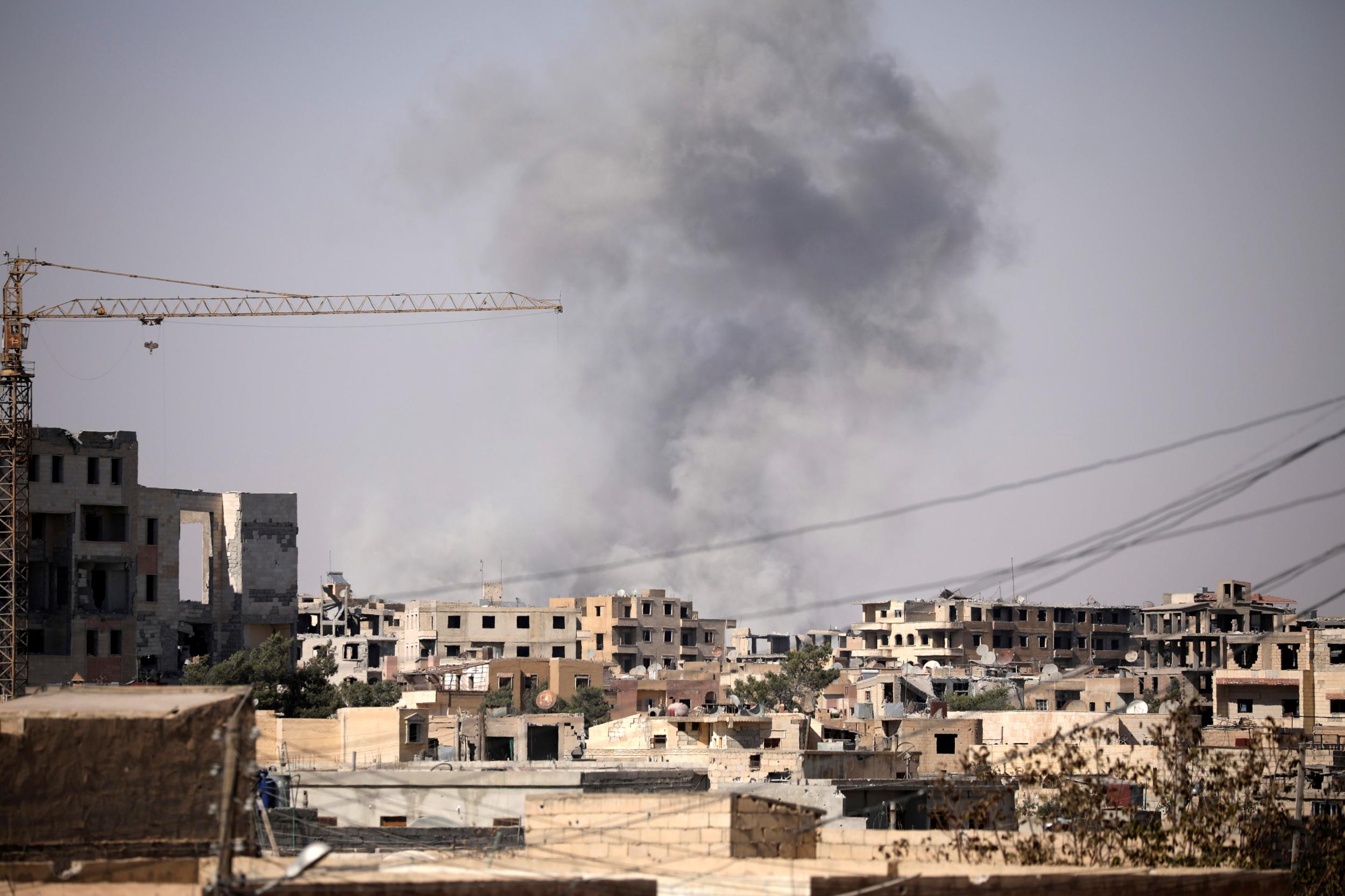Isis: 2,000 fighters using Raqqa's civilians as human shields as US-led coalition makes significant gains in Syria
US special envoy says militants are fighting to the death in the city as liberation plan advances

Your support helps us to tell the story
From reproductive rights to climate change to Big Tech, The Independent is on the ground when the story is developing. Whether it's investigating the financials of Elon Musk's pro-Trump PAC or producing our latest documentary, 'The A Word', which shines a light on the American women fighting for reproductive rights, we know how important it is to parse out the facts from the messaging.
At such a critical moment in US history, we need reporters on the ground. Your donation allows us to keep sending journalists to speak to both sides of the story.
The Independent is trusted by Americans across the entire political spectrum. And unlike many other quality news outlets, we choose not to lock Americans out of our reporting and analysis with paywalls. We believe quality journalism should be available to everyone, paid for by those who can afford it.
Your support makes all the difference.At least 2,000 Isis militants are still holed up in the Syrian city of Raqqa fighting for their lives as a US-led coalition closes in on the city, according to US intelligence officials.
US-backed Syrian Democratic Forces (SDF) have made “consistent gains” in the extremists' de facto capital and are on the verge of seizing full control of the southern neighbourhoods of the Isis-held zone.
But US counter-terror special envoy Brett McGurk said thousands of fighters still remain in the city and are using the estimated 25,000 civilians on the ground as human shields.
“We think there’s about 2,000 ISIS fighters left in Raqqa, and they will – they most likely will die in Raqqa,” he said.
“And what’s really happening in Raqqa – similar to what we saw in Mosul but on a smaller scale – the Isis fighters on the ground are using these civilians as their own shields, as their own hostages. They are using snipers to kill civilians who are trying to escape.
“They’re trying to put suicide bombers in columns of displaced people as they try to get out – the similar tactics we’ve seen from this barbaric terrorist organisation in other cities.”
Speaking at a special briefing in Washington, Mr McGurk said the US-coalition had already finalised a “day-after-liberation” plan for the city.
He said authorities had made plans for 50,000 people for the “very worst case”, despite believing the number of civilians trapped in the city to be much lower.
“As I mentioned, the UN has now gained road access, so they’re delivering a fairly large number of supplies,” he said.
“We’ve pre-positioned supplies so we’re ready for the day after Isis in Raqqa. And just to give you what – to tell you what that means, we have food ready for about 447,000 people.
“We have tents and shelters for an additional 50,000 people. We have medical treatment facilities for about over 200,000 people. Water sanitation, hygiene – all these things are getting pre-positioned to be ready for the day after ISIS.”
Isis has lost large expanses of territory in Syria over the last year to separate campaigns waged by the SDF, the Russian-backed Syrian military, and Turkey-backed Syrian rebels.
Taking control of the southern districts of the city would sever Isis's last remaining path to the Euphrates River which is to the south of the city.
In 2014, Isis had 40,000 foreign fighters from 110 countries across Syria and Iraq, according to US officials.
Since then, they are believed to have lost 70,000 square kilometers of territory - 78 per cent of the territory they used to hold in Iraq, and 58 per cent of the territory they used to hold in Syria.
Join our commenting forum
Join thought-provoking conversations, follow other Independent readers and see their replies
Comments